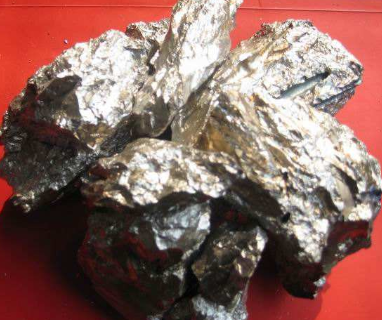Professional industry ceramic supplier, silicon nitride, silicon carbide, aluminum nitride and any other kinds of ceramics.
Overview of vanadium boride VB2 powder
Vanadium boride (VB2) has a hexagonal crystal structure with a melting point of 2980 degrees Celsius, high oxidation temperature and high hardness. It has been proved that the Gaver hardness of VB2 is 27.2±1.5 GPa, which has high thermal stability in air, and the transition metal boride among the transition metal borides has the highest resistivity value (41μΩcm) at room temperature.
Vanadium boride, English name is VANADIUM BORIDE, CAS number is 12045-27-1, molecular formula is BV, molecular weight is 61.7525, gray cubic crystal, mainly used as fine ceramic raw material powder for the production of wear-resistant and semiconductor films.
How is vanadium boride VB2 powder produced?
1. After mixing boron and niobium, they are pressed into a shape and then heated in a heating furnace. 2. Adopt an integrated approach. After mixing elemental boron and elemental bismuth, it is pressed into a shape, and the application of heating vanadium boride VB2 powder in a heating furnace: VB2 is also a characteristic of hard refractory ceramics and an excellent electrical conductor. Therefore, VB2 can be used as a fine ceramic raw material for the production of wear resistance and semiconductor films. Can be used in areas of conductive ceramic materials.
Vanadium boride is a metal boride, hexagonal crystal. Preparation method: It is prepared by high temperature reaction of metal vanadium and elemental boron according to the proportion in a vacuum or inert atmosphere.
Metal borides can be used to produce batteries or fuel cells, which can be an alternative energy source for petroleum resources. Electrochemical energy storage technology based on multi-electron oxidation of metal borides, such as vanadium boride, is expected to replace existing batteries based on single-electron charge storage. The multi-electron oxidation of a vanadium boride anode coupled with a carbon-air cathode can provide excellent electrochemical energy storage capacity due to its multi-electron charge storage capability.
5g of titanium-containing magnetite was ground into powder and mixed with 50ml of deionized water to produce a 10% titanium-containing magnetite solution.
Mix 10 ml of the titanium-containing magnetite solution from step one with 30 ml of a 2:1 (v/v) mixture of ethanol and water in a reaction vessel under ambient temperature and pressure conditions. 1 ml of freshly prepared vanadium tetrachloride from Example 3 or 4 was added to a mixture of titanium-containing magnetite ore solution and ethanol and water. The addition of vanadium tetrachloride causes the separation of vanadium pentoxide from the titanium-containing magnetite ore. After the titanium-containing magnetite is combined with vanadium tetrachloride, add 25ml of 1M sodium borohydride to the reaction vessel to produce vanadium (III) oxide according to the following reaction scheme:
V2O5+2VCl4+NaBH4+H2O→V2O3+NaCl4+H3BO3+H2O+Cl2
In the above reaction scheme, sodium borohydride is decomposed into sodium metaborate and hydrogen (H2). In the presence of sodium metaborate and hydrogen (H2), vanadium(III) oxide is reduced to vanadium(II) oxide according to the following reaction scheme:
V2O3+VCl4+NaBO2+4H2→VO+NaCl+H3BO3+H2O
Vanadium nanoparticles are formed in situ from vanadium (II) oxide according to the following reaction scheme:
2VO+HCl+Cl2+3NaBO2+4H2→V+3NaCl+H3BO3+H2O
Using each successive reduction reaction shown above, boric acid is formed, which reacts with vanadium nanoparticles to form vanadium boride according to the following scheme:
V+2H3BO3+3H2→VB2+H2O
The reaction mixture was incubated at ambient temperature and pressure for approximately 48 hours, resulting in the formation of vanadium boride crystals
Application of vanadium boride VB2 powder
Vanadium diboride (VB2) has a hexagonal crystal structure, a melting point of 2980 degrees Celsius, a high hardness, and a high oxidation resistance temperature of 1000 degrees Celsius. It can be used in fields such as conductive ceramic materials, atomic crystals.
The price of vanadium boride VB2 powder
The price of vanadium boride VB2 powder varies randomly with production costs, transportation costs, international conditions, exchange rates, and market supply and demand of vanadium boride VB2 powder. Tanki New Materials Co. Ltd aims to help all industries and chemical wholesalers find high-quality, low-cost nanomaterials and chemicals by providing a full set of customized services. If you are looking for vanadium boride VB2 powder, please feel free to contact us for the latest price of vanadium boride VB2 powder.
Supplier of vanadium boride VB2 powder
As a global supplier of vanadium boride VB2 powder, Tanki New Materials Co.Ltd has extensive experience in the performance, application and cost-effective manufacturing of advanced, engineered materials. The company has successfully developed a series of boride powder materials (including vanadium boride VB2 powder, molybdenum boride, tungsten boride, etc.), high-purity targets, functional ceramics and structural devices, and provides OEM services.
| Vanadium Boride VB2 Powder Properties | |
| Other Names | Diborylidynevanadium, Vanadium diboride, vanadium boride (1:2), |
| VB2 Powder, Vanadium Boride | |
| CAS No. | 12007-37-3 |
| Compound Formula | VB2 |
| Molecular Weight | 72.564 |
| Appearance | refractory solid |
| Melting Point | N/A |
| Solubility in water | N/A |
| Density | 5.1 g/cm3 |
| Purity | >99% |
| Particle Size | 325 mesh |
| Boling point | N/A |
| Specific Heat | N/A |
| Thermal Conductivity | N/A |
| Thermal Expansion | N/A |
| Young's Modulus | N/A |
| Exact Mass | 72.962 |
| Monoisotopic Mass | 72.962578 |
| Vanadium Boride VB2 Powder Health & Safety Information | |
| Safety Warning | N/A |
| Hazard Statements | N/A |
| Flashing point | N/A |
| Hazard Codes | N/A |
| Risk Codes | N/A |
| Safety Statements | N/A |
| RTECS Number | N/A |
| Transport Information | N/A |
| WGK Germany | N/A |
